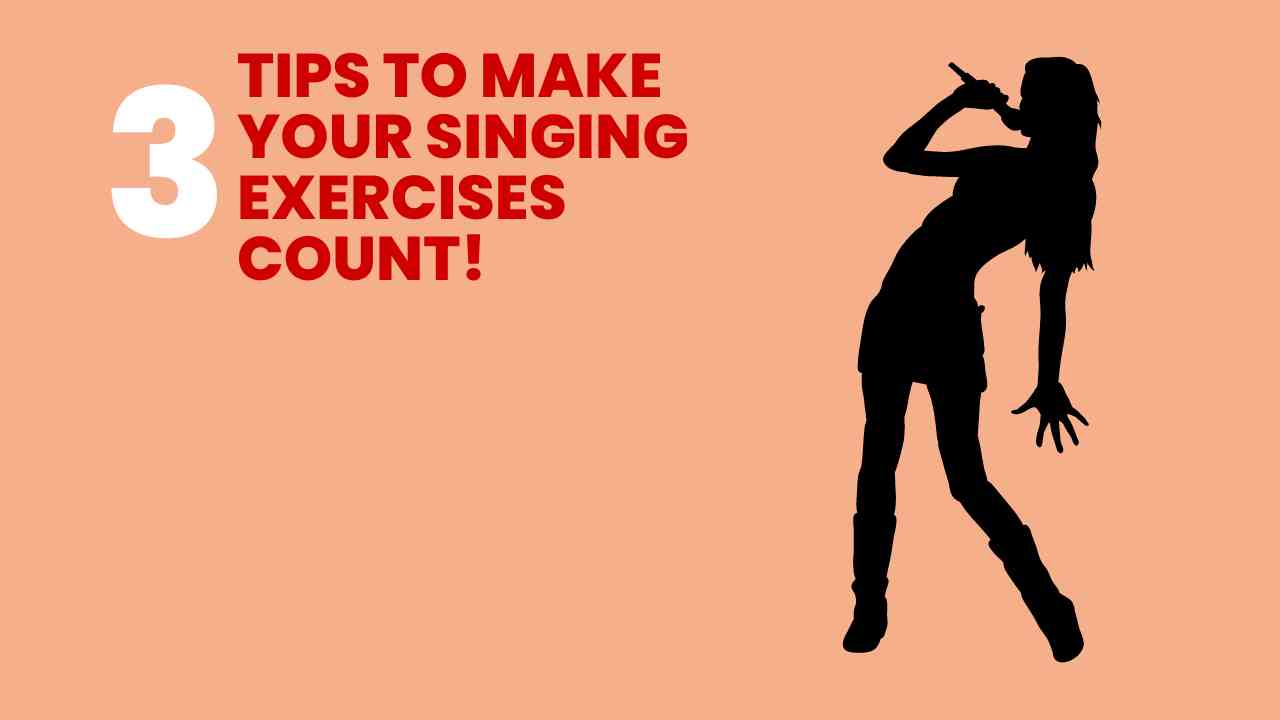I Help people sing and speak expressively and powerfully no matter the level of experience :)
HI, I'M JORGELINA
EXPAND YOUR VOCAL RANGE TODAY!
Grab today my 3 SINGING SECRETS to expand your vocal range for FREE!
GRAB IT NOW

Understanding Feedback for Effective Practice: Increase Your Awareness and Improve Your Voice!
Table of Contents
If you’ve attempted to learn singing on your own with disappointing results, this article is tailored just for you. Today, we’ll delve into the world of singing, uncovering how you can enhance your practice and truly understand if an exercise is working for you or not.
Many aspiring singers turn to YouTube videos or online courses, naively assuming that repeating exercises will magically improve their voices. But it’s not that simple. Singing isn’t a one-size-fits-all endeavor. You need a strategy to truly master your instrument—your voice.
So, whether you’re a self-taught singing student or following a structured program, increasing your awareness of your voice is crucial. Stick around until the end, and I’ll share some valuable tips that you won’t find everywhere.
Now, let’s dive into the three components of good singing action that will help you gauge your progress and ensure you’re using your body efficiently, both in singing and in everyday life.
The Flow of Breath

Singing is all about finding the right balance with your breath. Inviting the low-pressure system for singing is not only more efficient but also safer. So, here’s a quick check: Are you holding your breath before singing an exercise? If so, you’re activating the high-pressure system, which can harm your voice.
Picture this: You’re attempting lip trills, a common exercise. If you hold your breath before singing, it might sound like you’re straining. But, for the exercise to be beneficial, you should be able to breathe in and sing right away, like a breeze flowing through your voice. This approach reduces pressure, makes singing easier, and is gentler on your vocal cords. The same concept applies to any vocal exercise; observe and adjust accordingly.
Is your head moving freely?
When you’re singing a song or practicing an exercise, try to assess if your head is stiff or if it is freely moving. Stiffness might indicate poor coordination. Imagine practicing lip trills with your head held rigidly. No matter how precisely you follow the exercise, it won’t help because you’re not using your body efficiently.
In contrast, if you can move your head freely without dragging your shoulders along, you’re on the right track. Apply this to any song or exercise, and if your head isn’t naturally moving, it might be time for an adjustment.
Freedom of Your Spine

Your posture has a profound impact on your singing. Many of us unknowingly stand with too much weight on our heels, causing our spine to lock. The brain interprets this as fear, triggering a less effective vocal exercise.
Check yourself while singing. Can you maintain a freely moving spine, or do you notice any tension in your back? If you find yourself locked, shifting your weight slightly forward and releasing your joints might make a difference.
Now, you might wonder if there’s a way to learn singing that addresses all these aspects in a method that integrates mind, body, breath, and voice. Good news! I’m thrilled to announce the upcoming release of my online subscription for learning to sing from scratch. This program will include videos, weekly coaching calls, and monthly masterclasses to guide you towards becoming the singer you aspire to be.
Want to receive weekly articles in your inbox? Subscribe to our newsletter for weekly original singing articles and videos, and to receive all the news about our latest online singing programs!
Want to learn singing from a contemporary and holistic approach? Join us today!
Explore our singing programs (online and in person)
I help people to develop their voice and singing from a holistic approach. I teach vocal lessons in person in Auckland, NZ, and online. Also stay tuned for my new online singing programs!❤️
My greatest passion has always been the voice, music and energy arts.
My personal and artistic journey has led me to understand that the voice and the body are fully connected, and that includes not only the physical body but also the mental, emotional and spiritual body.
Through holistic vocal training you not only learn to become a great singer while taking care of your voice, but you also improve your mental and physical wellbeing❤️
AUCKLAND CONTEMPORARY SINGING SCHOOL - COPYRIGHT 2024 ©
leave a comment